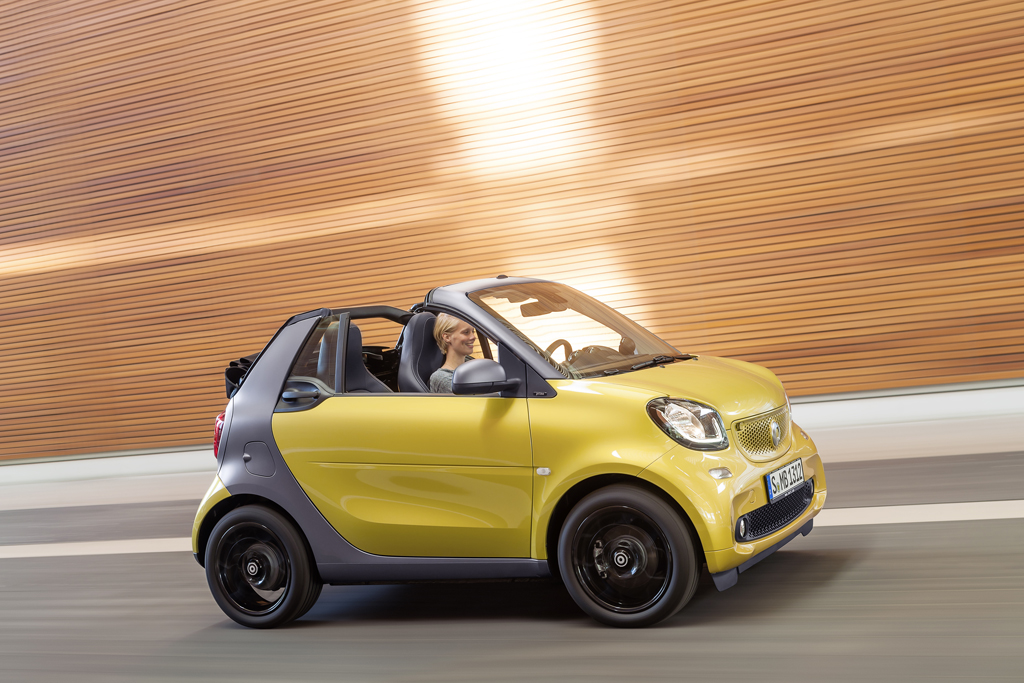By Jim Gorzelany
CTW Features
The most fuel-efficient models on the market have been falling out of favor lately, as cheap gasoline rekindles consumers’ love affair with less-efficient pickup trucks and SUVs. Sales of “green” cars were down by around 16 percent last year, yet shoppers who still care for the well-being of Mother Nature will find more environmentally friendly electric and hybrid-powered vehicles on market than ever, with even more coming down the road.
As such, they comprise all 12 slots in the annual “Greenest Cars” list compiled by the American Council for an Energy Efficient Economy in Washington, D.C. For the third year running, the ACEEE says the greenest car sold in the U.S. is the Smart ForTwo Electric Drive (in both coupe and convertible versions), which is EPA rated at the electric equivalent of 107 mpg in combined city/highway driving. Toyota leads the list with three hybrids represented, with Chevrolet placing two electric cars among this year’s greenest models.
At the other end of the automotive spectrum, the ACEEE also identified the “meanest” vehicles for 2016. Mercedes-Benz dominates the list of the 12 worst polluters with five models, though to be fair three are separate versions of the same vehicle, the big and boxy G-Class luxury SUV, with the other two representing the likewise large GL-Class SUV. Toyota/Lexus takes second place with three entries, all full-size trucks.
While in the past this “dirty dozen” list packed a generous assortment of fast-and-furious sports cars and luxury sedans, for 2016 all but two models – both exotic Bentley motorcars – are large trucks, vans or SUVs. We’re featuring the full list of the ACEE’s greenest and meanest models in the accompanying box.
How inhospitable to the planet are these models compared to those residing on the greenest list? The Environmental Protection Agency (via its fueleconomy.gov website) estimates the lowest-ranked model for 2016, the Mercedes-Benz G65 AMG, will consume an estimated 27.5 barrels of oil annually with 762 grams of greenhouse gases emitted per mile. By comparison, the lowest rated gas-powered model, the Toyota Prius ECO hybrid, is estimated to burn the equivalent of just 5.9 barrels of oil and return 158 grams of tailpipe CO2 back into the environment. Meanwhile, the Smart ForTwo Electric Drive uses no gasoline and emits zero pollutants.
The ACEEE determines its rankings according to a “cradle to grave” combination of factors that primarily takes into account a vehicle’s fuel economy and its tailpipe emissions. The latter include health-damaging and smog-forming airborne pollutants like hydrocarbons, nitrogen oxide, particulate matter, carbon monoxide and formaldehyde, as well as greenhouse gases that contribute to climate change, like carbon dioxide, nitrous oxide, methane and other compounds.
Also considered are emissions estimates for a vehicle’s manufacturing process, disposal impact and (where applicable) the sources of energy used to generate power for electric cars, with states that rely heavily on coal-based plants faring the worst in this regard.
So-called Green Scores for all 2016 vehicles, both environmental winners and sinners, are available via the ACEEE’s greenercars.org database, which includes information for each model’s fuel economy, health-related pollution impacts and greenhouse gas emissions.
© CTW Features
‘Greenest’ Vehicles For 2016
- Smart ForTwo Electric Drive
- Chevrolet Spark EV
- Fiat 500E
- Toyota Prius Eco
- Volkswagen E-Golf
- Nissan Leaf
- Kia Soul Electric
- Toyota Prius C
- Toyota Prius
- Ford Focus Electric
- Chevrolet Volt
- Volkswagen Jetta Hybrid
‘Meanest’ Vehicles for 2016
- Mercedes-Benz G65 AMG
- Chevrolet/GMC Express/Savana G2500 Wagon
- Mercedes-Benz G63 AMG
- Bentley Mulsanne
- Mercedes-Benz G550
- Toyota Sequoia V8
- Ford Transit T150 Wagon
- Mercedes-Benz GL63 AMG
- Lexus LX 570
- Bentley Continental GT/Flying Spur
- Toyota Tundra
- Mercedes-Benz GL550
Source: ACEEE, Washington, D.C.

